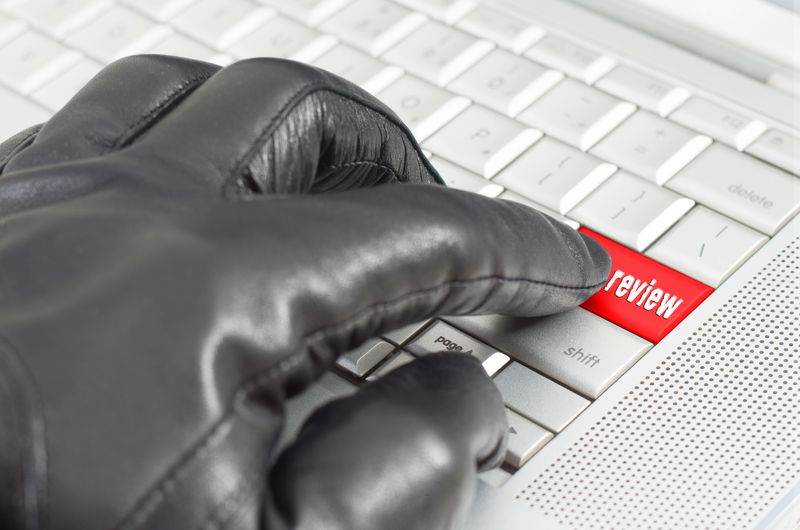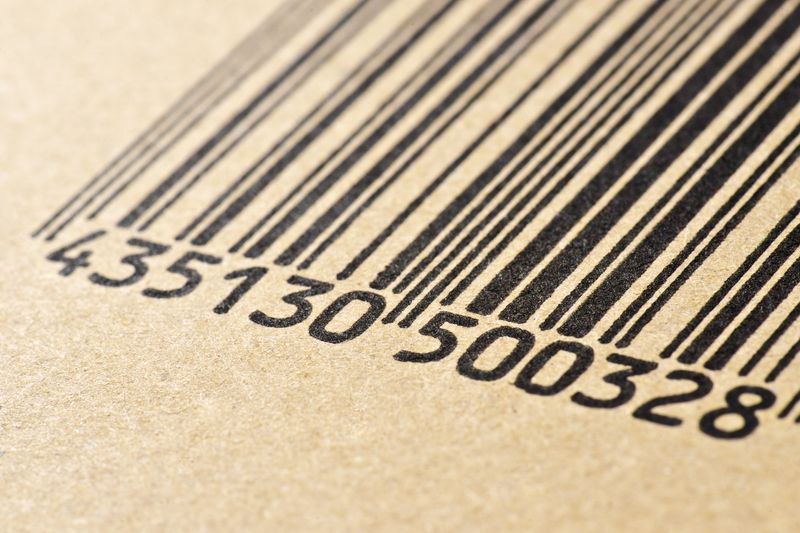You work hard to get your listings done and published on Amazon. The amount of work put into getting a product on Amazon, from the conceptualization of products to be sold until the production and copywriting for the listings, is no joke. That said, you have to put utmost effort when it comes to protecting your business. You can achieve this by learning how to protect your brand on Amazon.
Before discussing topics related to Amazon Brand Protection, you must understand why this is such a big deal and why you need it for your business. You might have heard of this term from other sellers or might have come across it on different websites. But what exactly is Amazon Brand Protection? Isn’t Amazon “secure” enough so you won’t have to protect your listings?
These are the questions you’ll find answers to in this article. Aside from knowing these, you’ll also learn more about how you can protect your brand on Amazon and how taking the necessary steps can be advantageous on your part.
Table of Contents
The Importance of Amazon Brand Protection
When you’ve put so much time, effort, and money into establishing your brand, you will want to do everything you can to protect it. Enrolling your business in Amazon Brand Registry puts you in a safe position when you’re selling on the platform. With it, you’re assured that your products won’t be hijacked or have unauthorized sellers. In addition, it says that you’re confident you’re the only one who sells these products, and these are all rated to your standards.
But protecting your business isn’t just for preventing unknown individuals from getting through your listings. It’s more of providing your customers a better shopping experience. Giving them 5-star customer service is pivotal when you’re scaling a business up. Enrolling in the Amazon Brand Registry program allows you to maximize the interface your customers will face when browsing your shop. These would include the following:
Building your brand through A+ Content, Sponsored Brands, Amazon Stores, and Brand Analytics
Don’t just rely on your listings to talk about what your products’ features are. Expand your resources further by creating A+ content, which will give an in-depth view of what your products can offer through rich text and images that will help tell a story and sell it.
You can take advantage of Amazon Stores and Sponsored products by raising brand awareness (especially if you’re a relatively new brand) which will help drive traffic and sales. Even if you’re not making any sales, you have information right at your fingertips with Amazon Brand Analytics. With it, you will have access to an extensive amount of data about your clients’ demographics and the keywords they search for.
Protect your brand with accurate listings and proactive brand protection
Once you’ve established your brand, you’ll see an influx of orders. This is when you’ll know that you could properly introduce what your brand is and what it can offer. With this growth also comes the attention you’ll get from your competitors. There’s a big chance that when they see your business booming, they’ll most likely copy your products, or worse, hijack them completely. Don’t want your Amazon business to take off—protect it even if you’re still establishing it.
With Amazon Brand Registry, you can protect your brand by providing accurate listings which set your customers’ expectations. Aside from this, you don’t have to scour Amazon’s millions of search pages to check if your listings got hijacked or someone is providing inaccurate content about your products. Instead, you are guaranteed proactive brand protection.
Understanding Amazon Listing Hijackers
Now that you have some clue on why you should protect your brand on Amazon, you’d notice the term “hijackers” intertwined with it. Does this mean your listings can get “hijacked”? The short answer is yes. This happens when a third-party seller offers a counterfeit version of what you’re selling. Since these are counterfeits or replicas of your products, they are usually cheaper and of lower quality.
Buyers will sometimes find it hard to differentiate between the original and hijacked products because they look almost the same. So when someone buys a counterfeit item of your product from other sellers thinking it was you who sold it since you own the brand, they will give it a low rating because it doesn’t live up to what you advertised.
How to know if your Amazon listings have been hijacked?
It’s tricky to know whether your listings have been hijacked. It’s not that noticeable as soon as someone copies your listing. However, here are some signs you should look out for:
- You get five-star reviews from your customers, but there’s a bothersome number of people who are giving you very low ratings.
- Other sellers are getting the Buy Box for your listing. The Buy Box is a feature wherein your products get the spotlight on the right side of the product detail page. There’s a clamor between sellers, especially those who sell the same products, to win this feature because users tend to check out products in the Buy Box section more.
- You will see a product listing very similar to yours, but you don’t know who they are, or they are not authorized sellers of your product. They price it lower than what you offer.
Hijacked listings can affect your brand significantly in terms of your sales and customer reviews. As mentioned before, one sign that your listings have been hijacked is if these have extremely negative reviews. Even if you have a high average rating, seeing low ratings and negative reviews on your listings is enough for potential customers not to continue their purchase. This situation might lead to a downward trend of sales for you, so you have to deal with the hijacker as soon as you can.
Fake Reviews
Since goods sold from digital platforms like Amazon cannot be viewed or touched personally first, there are three ways to convince someone to buy from you. These are through your product images and videos, copywriting, and customer reviews. You can control how well you’re presenting your products through your listings, but you don’t have control over what your customers are going to say about it.
Most shoppers who buy on e-commerce marketplaces know the importance of online reviews. They rely on them more often than not, especially if they have not decided whether to purchase the product yet. Since most people who shop online value reviews that much, black hat sellers on Amazon take advantage of this.
This is where fake reviews come in. There are two types of fake reviews, and both are on the extremes. These may be extremely good or bad reviews—there’s no in-between! If you’re a keen observer of how reviews work on Amazon, you will notice that buyers write their reviews based on their emotions. As a result, fake reviews are, more often than not, exaggerated. But if you’re not used to spotting which is fake or not, here’s how you can do it:
- Check the “verified purchase” tag: Amazon recognizes that there are a substantial amount of fake reviews on their site. They addressed this with the “verified purchase” tag, wherein only reviewers who have legitimately bought the product will have this tag. If there’s a very positive or negative review without the “verified purchase” badge, there’s a likelihood that these are fake.
- Check out reviews from other e-commerce platforms: If you’re not sure how real reviews should look, you can search for reviews from other sites to get a feel of what legitimate reviews sound like. This is helpful, especially if the product you want to buy on Amazon is also available on other sites. If the reviews you see on Amazon for the same product and supplier are too negative or positive, but it doesn’t match the same with that from other sites, then there’s a big chance that the reviews on Amazon are fake.
Six Ways on How You Can Protect Your Brand
Now that you have an overview of what Amazon Brand Protection is and why it is important to your business, here’s how you can make it happen.
1. Enroll in Amazon Brand Registry.
The first step in protecting your brand is enrolling it on Amazon Brand Registry. With it, you’re guaranteed that other sellers cannot make any changes to your product’s detail pages. In addition, they won’t claim your products as theirs since you will be certified as the brand owner. This will protect your registered brand and will establish you as the owner and your products as the standard.
2. Have your products privately labeled.
Privately labeled product listings are a lot harder to hijack or copy compared to those generic ones. Most businesses that enroll in Amazon Brand Registry are privately labeled because they took the time to conceptualize their products and branding. With branding in place, it’s harder to copy your products since there’s a specific logo that may not easily be copied.
3. Use Amazon Barcode rather than Manufacturer Barcode.
Using an Amazon Barcode (FNSKU) is more secure than a Manufacturer Barcode (UPC). This is because when you use FNSKU on your product listings, you are uniquely identified as the product seller. UPCs, on the other hand, are available to use for any seller on Amazon. Since anyone can use UPCs for their listings, it will be a lot harder to see who’s hijacking your listings.
4. Use Two-Factor Authentication in Amazon Seller Central.
It may feel like it’s a hassle to use two-factor authentication (2-FA) every time you log in to your account. But like with your other social media accounts that offer 2-FA, you know that it gives an extra layer of security when logging in. Again, it might seem like it’s such a stretch to keep your accounts secure, however you should never underestimate black hat sellers; they will go through great lengths to access your listings and inventory.
5. Register your products for a trademark.
If you’re serious about branding your products and letting people know that you’re the seller who provides these authentic and high-quality products, register your products for a trademark. You will have utmost protection from counterfeiters since these are recognized by intellectual property rights. In addition, trademarking your products will immediately mean that anyone who copies and sells them on the platform commits a serious and punishable crime.
6. Use Amazon Transparency.
After trademarking your products, you can further increase your brand’s protection by using Amazon Transparency. Aside from Brand Registry, they offer this to their sellers who want to get an added level of security. Sellers will have access to barcodes which they can add to their products to signify that these are all authentic.
Upon adding these transparency barcodes to your products, Amazon will scan these to ensure that only authentic products are shipped to the customers. Once the products are delivered, customers can also check these barcodes using the Transparency app to ensure they have received legitimate products.
Summary
After considering all of the things mentioned above, it is very important to keep your brand protected. Conceptualizing, building, and rolling out your products on Amazon is a very tasking experience. It only makes sense to want to preserve your products’ integrity after putting in energy and resources into making it happen. The last thing you would like to happen is for a third-party seller to leech off of your listings.
Thankfully, you can prevent this from happening by enrolling your products on Amazon Brand Registry. Outlined above are six ways on how you can properly protect your brand. It might seem like it’s a hassle to do so, but you have to take these necessary steps so your efforts toward building your business on Amazon won’t go to waste.
Protecting your business on Amazon is more than just preserving your image. It’s also about giving your customers the best shopping experience possible. Sales are one thing, but customer loyalty is another. If you’re looking to know how brand protection works on Amazon, it’s best to work with a trusted Amazon digital marketing company. They’ll get you to where you want to go!
Author’s Bio
Jayce is the managing director of Seller Interactive, the number one Amazon advertising agency based in Canada that helps brands build their business on Amazon. His content marketing expertise has led him to work with brands such as Toyota and GoDaddy, producing content that has reached over 20M views in a month.





